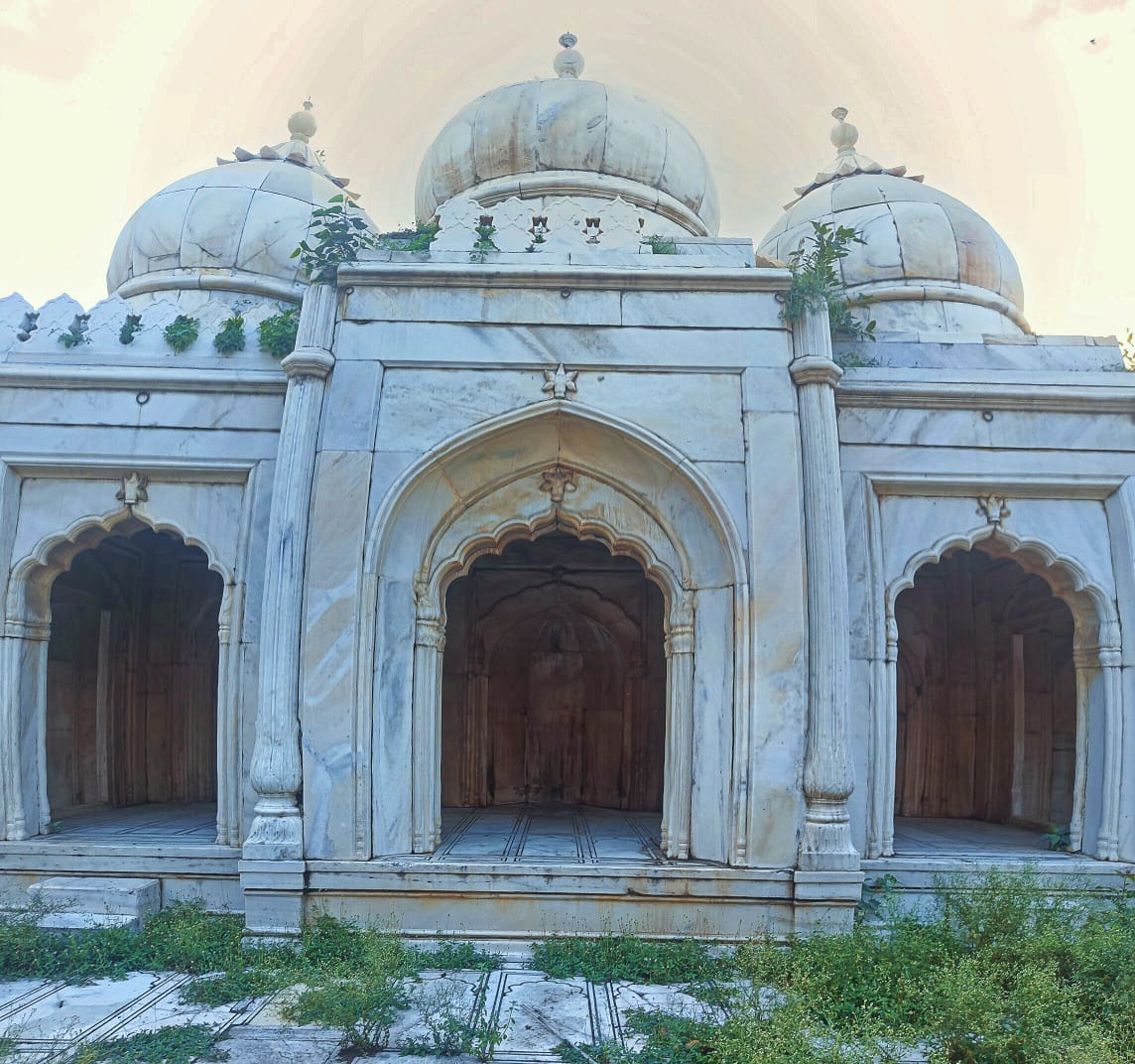
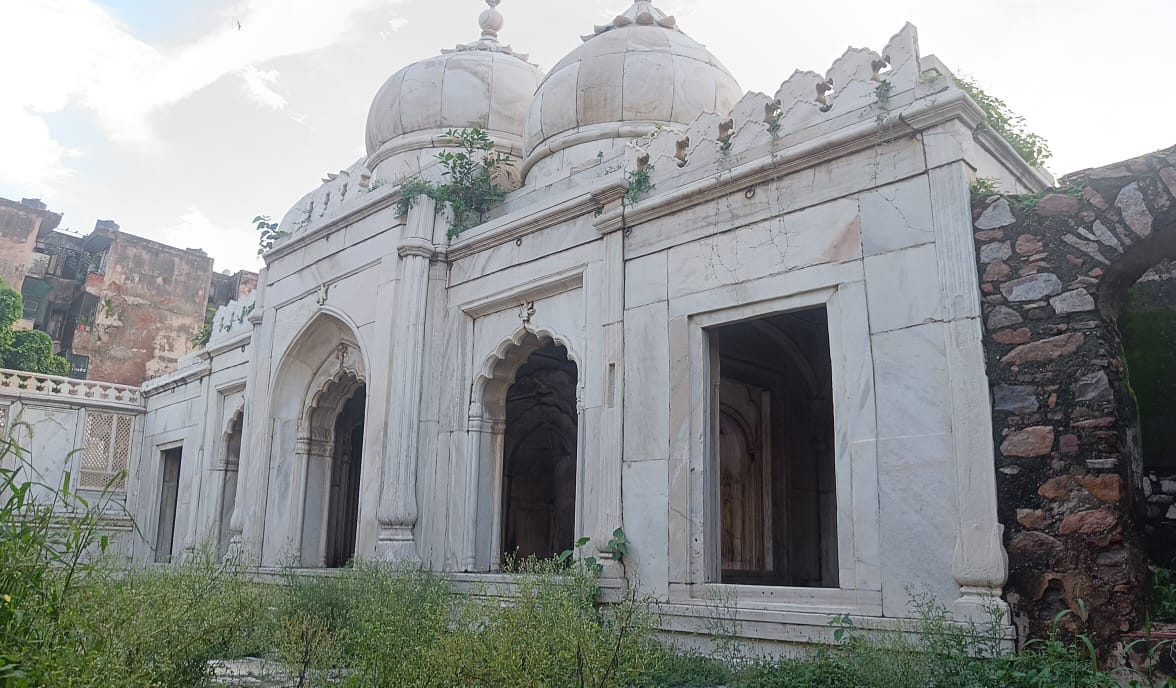
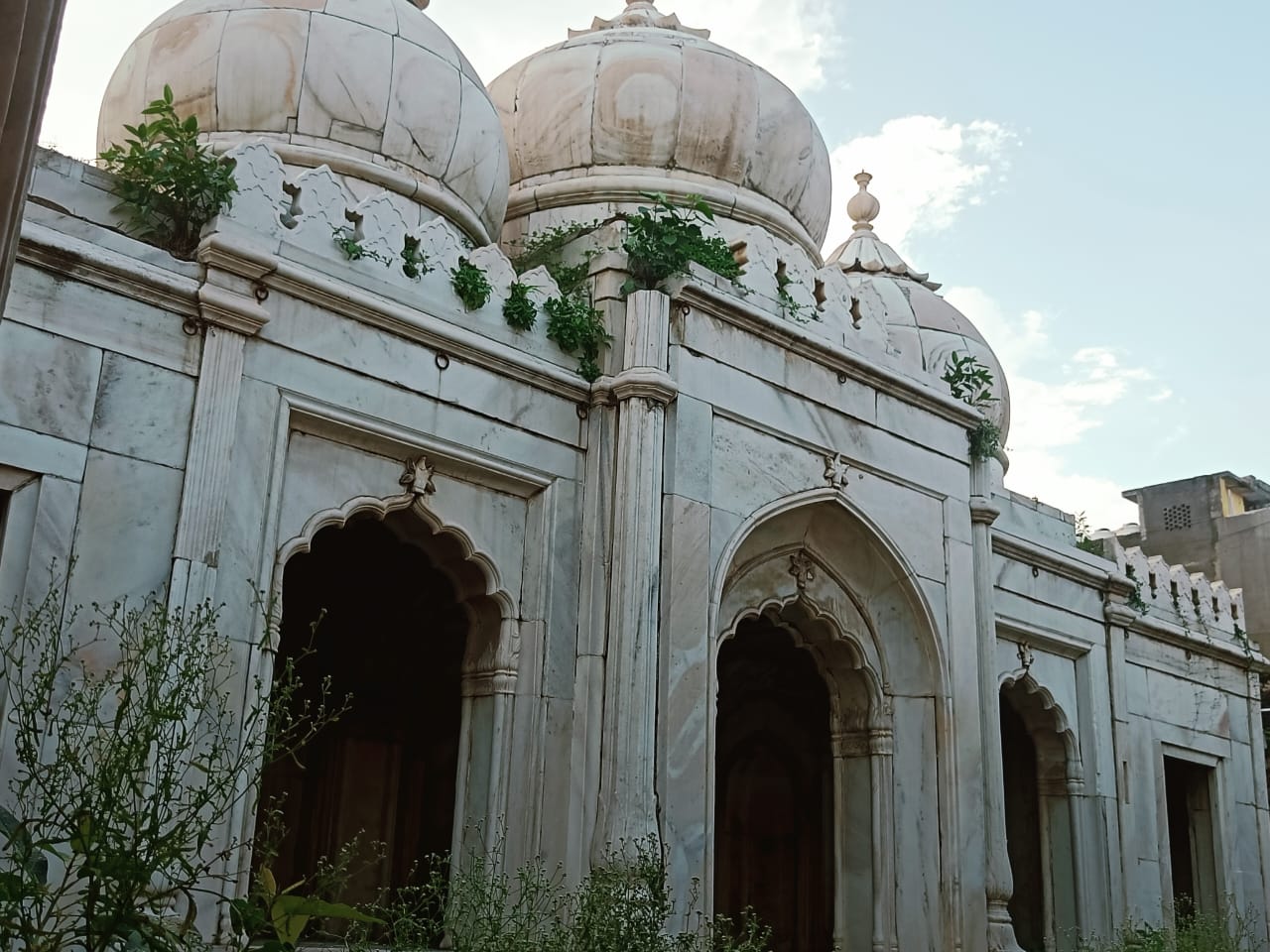
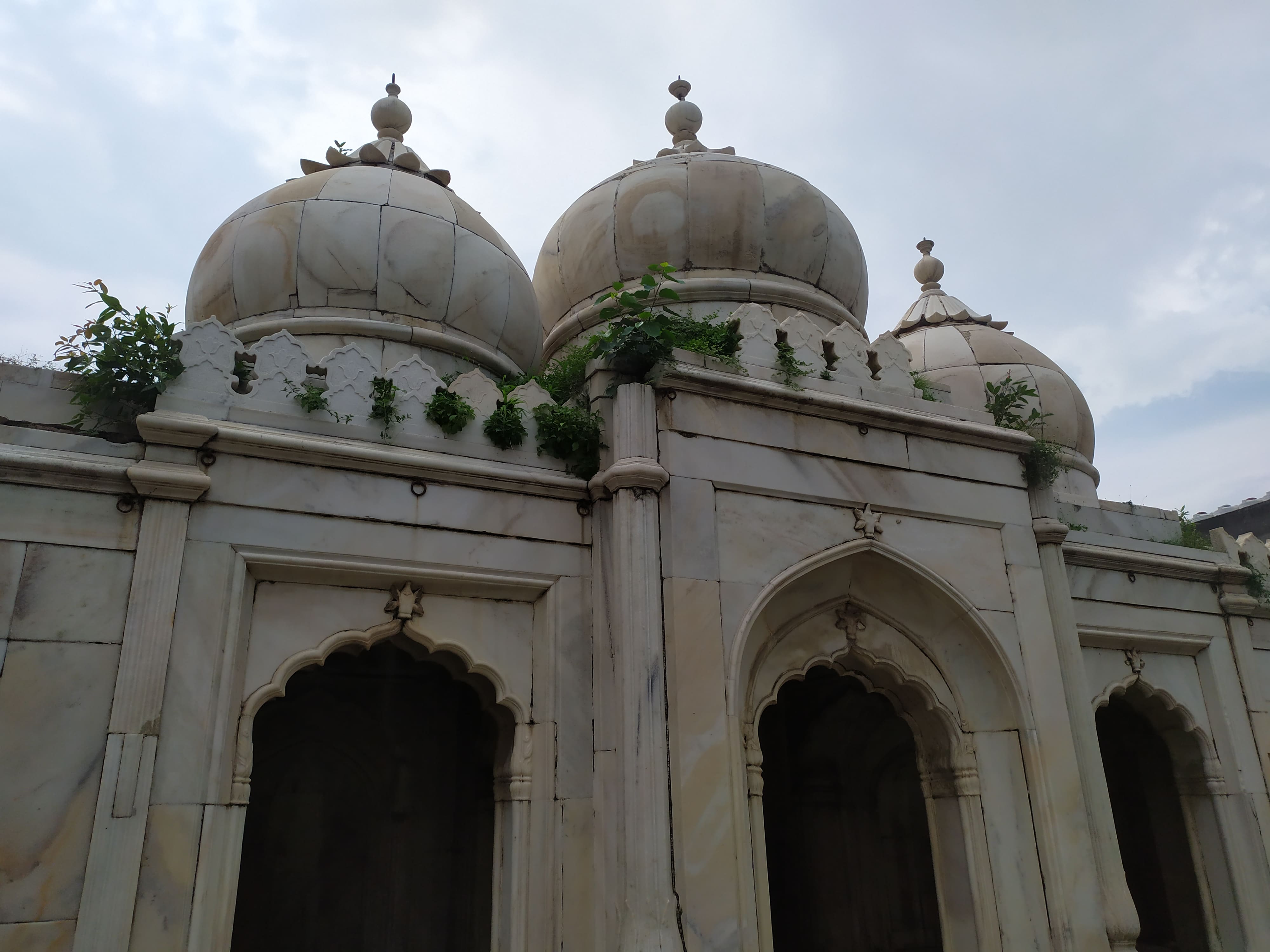
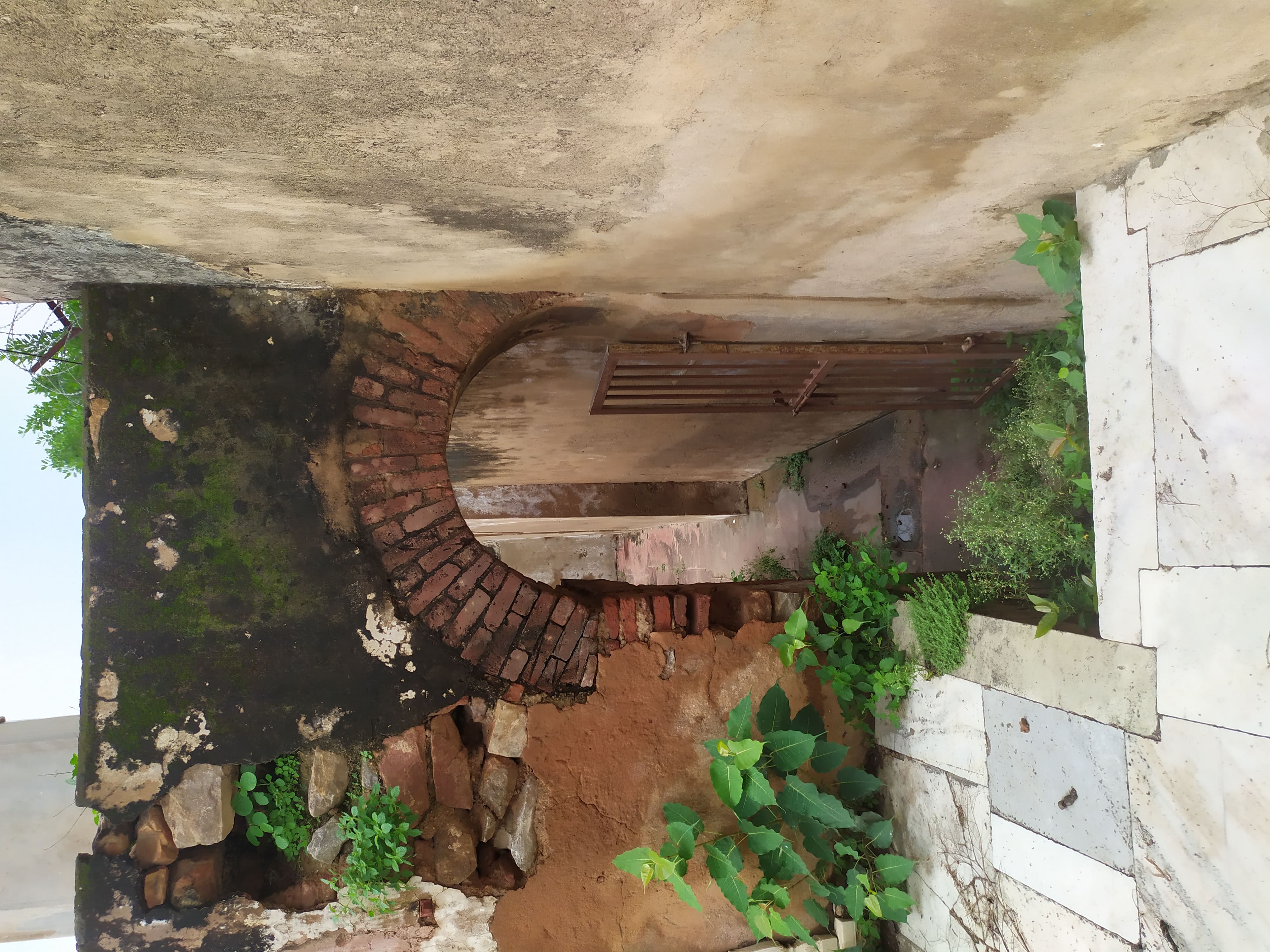
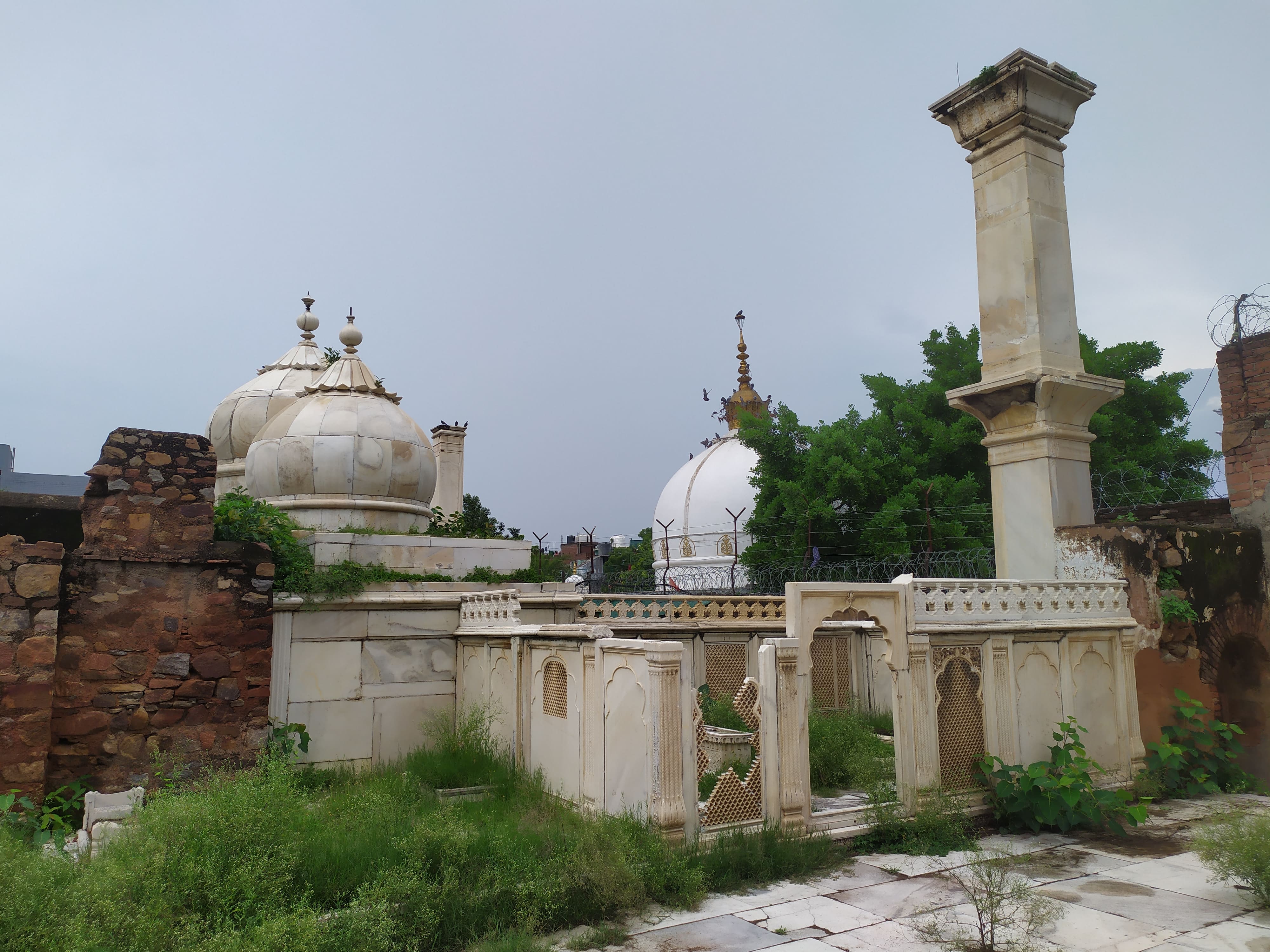
Moti Masjid, or the Pearl Mosque, constructed in 1709, holds a special place in Mughal architectural history. Built during the reign of Bahadur Shah I, it represents the twilight era of Mughal rule in India. This mosque is particularly significant as it's considered the last example of the Mughal tradition of constructing small, marble-faced mosques. The mosque's location is noteworthy. It was built in the vicinity of the dargah (shrine) of Qutbuddin Bakhtiar Kaki, a revered Sufi saint. This placement reflects a shift in Mughal patronage patterns. Under Bahadur Shah I, there was unprecedented imperial support for this dargah, and the construction of Moti Masjid near it symbolizes this changing dynamic between Mughal royalty and Sufi shrines. Architecturally, Moti Masjid is a single-aisled prayer hall comprising five bays. Its design, while modest compared to earlier grand Mughal mosques, still showcases the refined aesthetics of Mughal architecture. The use of marble for facing the mosque, a material often reserved for imperial projects, underscores its importance despite its relatively small size. There's some scholarly debate about the exact patron of the mosque. While traditionally attributed to Bahadur Shah I himself, some historians, like Dadlani, suggest it might have been commissioned by a family member or a high-ranking official of the emperor. This uncertainty adds an intriguing layer to the mosque's history and reflects the complex nature of patronage in the later Mughal period. The mosque's subsequent history is equally significant. During the tumultuous period of India's partition, Moti Masjid suffered considerable damage in communal uprisings. Despite being a protected monument, its marble minars were torn off and smashed – a stark reminder of the vulnerability of historical sites during times of social unrest. Today, the mosque stands as a poignant symbol of both Mughal architectural heritage and the challenges faced in preserving historical monuments. The sole surviving minaret, now supported by scaffolding, serves as a silent testament to the mosque's former glory and the urgent need for conservation efforts. In essence, Moti Masjid encapsulates within its structure and history the changing fortunes of the Mughal Empire, the evolution of imperial patronage, the enduring influence of Sufi traditions, and the complex interplay of communal relations in modern India. Its current state of neglect, despite being under the protection of the Archaeological Survey of India, raises important questions about heritage conservation in rapidly urbanizing environments.